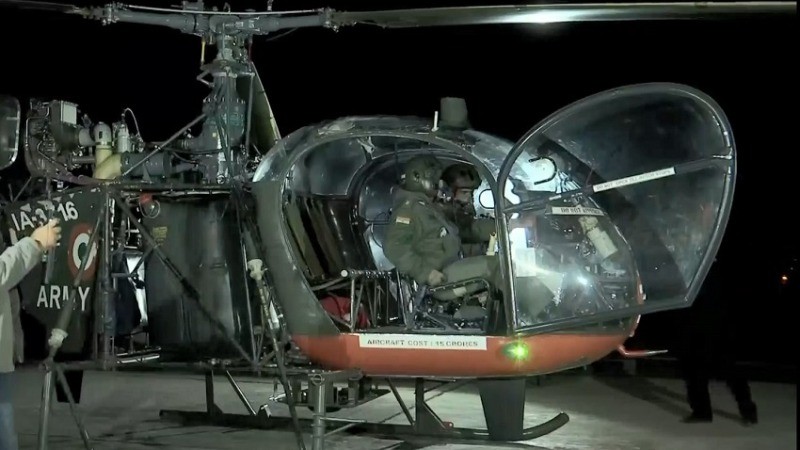
The Indian Army has successfully demonstrated its capability to conduct night operations in the high-altitude regions of Ladakh using indigenous Dhruv Advanced Light Helicopters (ALH). These helicopters, produced by Hindustan Aeronautics Limited (HAL), are vital for the Army's missions in the challenging terrain and extreme weather conditions of the area.
Havinder Singh, an Army personnel responsible for maintaining the fleet, highlighted the ongoing efforts to ensure the helicopters are ready for critical missions. "My job is to ensure all technicians and supervisors under me receive continuous training on this helicopter. Many agencies, including logistics and HAL, play a role in keeping this helicopter serviceable. Coordinating with them and ensuring their teams are available here is part of my responsibility. The most important task is flight safety, and there is no compromise in this regard."
Singh also discussed the additional challenges faced during the winter months when temperatures drop dramatically. "In two months, temperatures will fall to minus 20 or even minus 30 degrees Celsius. While the current weather is manageable, the cold weather presents difficulties. Technicians can only work on inspections for about 10 minutes before needing to warm up."
Major Ayush Devliyal, a technical supervisor, emphasized the thorough inspection process required before a helicopter is cleared for flight. "Every aspect of the aircraft is closely checked by specific teams, and after all systems are cleared, an engineering officer certifies it for flying. Once these checks are completed, the pilot accepts the aircraft for operations."
Night flying in Ladakh presents unique challenges for pilots as well. Major Amarendra, a Cheetah helicopter pilot, shared the difficulties of operating at night in such harsh conditions. "Night flying is more challenging than flying during the day. At night, depth perception decreases, so we rely heavily on instruments. The winds tend to be stronger at night, and we must account for turbulent winds."
The Indian Army’s night operations in Ladakh involve significant coordination between technical teams and pilots, with both weather and visibility posing serious challenges in the high-altitude environment.
First-Ever Future Warfare Course Set to Launch on September 23
\Indian Army TES Recruitment for these posts
India Successfully Conducts Back-to-Back Tests of Vertical Launch Short Range Surface to Air Missile